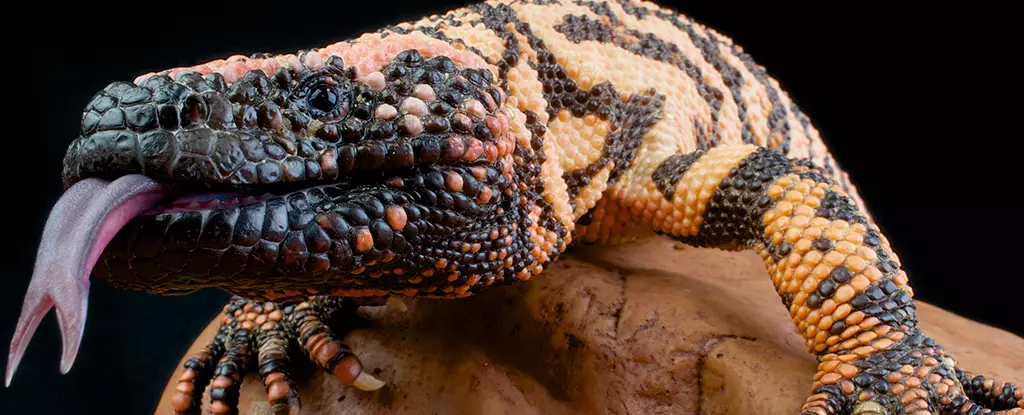In the quest for effective treatments, the natural world often presents unexpected solutions, particularly through the study of animal venoms. Surprisingly, the toxins once considered lethal can serve as a goldmine for pharmaceutical advancements. This article delves into how compounds derived from venomous creatures have led to significant medical breakthroughs, illustrating the necessity of biodiversity in these discoveries.
The tale of medical breakthroughs begins with the Gila monster, one of the few venomous lizards, known for its potentially fatal bite. However, within its venom lies Exendin-4, a remarkable protein that closely resembles the glucagon-like peptide-1 (GLP-1) found in humans. This protein, pivotal in regulating blood sugar and appetite, captivated endocrinologist Daniel Drucker at the close of the 20th century.
Drucker’s team sought a stable analog of GLP-1, as the body rapidly metabolizes this hormone. By closely analyzing the Gila monster’s venom in collaboration with notable figures in endocrinology and biochemistry, researchers identified the key protein that would ultimately revolutionize diabetes treatment. The resulting synthetic GLP-1 agonists, like Ozempic and Wegovy, have become integral not only in managing type 2 diabetes but also in combating obesity.
In the years that followed, the approval of these agonists by the FDA marked a pivotal moment in endocrinology, showcasing how the darkest corners of biodiversity can contribute to significant medical advances. This process highlights an important theme: life-saving products often originate from the most unlikely sources.
Transcending the Gila monster’s remarkable story, the Brazilian viper, or Bothrops jararaca, boasts a history intertwined with modern medicine. The venom of this snake contains powerful enzyme inhibitors that work to immobilize its prey, but these same compounds have been repurposed for human health.
Lisinopril, a commonly prescribed medication for high blood pressure and heart failure, directly stems from the venom’s ability to reduce blood flow constriction. Such a direct correlation between a deadly toxin and an essential medication emphasizes the intricate ties between nature and health, urging a broader perspective on how we perceive toxicity in the animal kingdom.
The exploration of venom’s medicinal value doesn’t stop with reptiles. Take, for example, the Caribbean sponge, scientifically named Tectitethya crypta. As some of the planet’s oldest organisms, sea sponges have developed unique molecular structures to dodge damage from predation—a necessity in their aquatic habitats.
These sponges produce unusual nucleosides that have inspired the creation of cytarabine, a crucial chemotherapy drug for treating certain types of leukemia. The fact that a simple organism, adapting to its environment over millions of years, can provide the catalytic knowledge for addressing human health crises underscores the importance of ecological conservation. Protecting habitats isn’t merely about saving species; it can also safeguard potential medical advancements.
A Light in the Darkness of Cancer
The relationship between animal toxins and oncology is particularly fascinating. The case of Jim Olson is a testament to ingenuity and resourcefulness in medical research. Faced with the limitations of traditional surgery in removing a brain tumor from a young patient, Olson and his team sought a novel solution for visualizing cancerous tissues.
Their search led them to the venom of the deathstalker scorpion (Leiurus quinquestriatus), which produces a peptide called chlorotoxin. This peptide binds specifically to brain tumor cells without adversely affecting healthy cells. By harnessing its properties, researchers created Tozuleristide, a tool that fluoresces under near-infrared light, enabling surgeons to discern malignant tissues from healthy ones.
This innovative application of venom highlights the promising prospects of using natural toxins not merely as threats but as transformative agents in medical science.
Conservation: The Key to Future Discoveries
As the modern world progresses, the increasing rate of species extinction poses a stark challenge to ongoing and future medicinal discoveries derived from nature. The incredibly diverse ecosystems that give rise to these life-saving compounds are diminishing at an alarming rate. It is vital to advocate for conservation efforts, ensuring that the wealth of potential medical knowledge encapsulated within these species remains accessible to future generations.
The unusual intersections of toxicity and treatment remind us to remain curious and vigilant. While venomous creatures may seem like threats to human life, the solutions they harbor suggest a deeper interdependence between all species. The exploration of these relationships may deliver transformative insights into health care, showcasing that the answers to our most pressing health challenges may lie in the most unexpected places, waiting for the right moment to emerge.


Leave a Reply